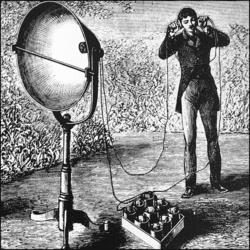

#PHYSICS 101 DVD YOU TUBE PLUS#
Botany in 8 Lessons was going to cover just about everything from Apologia’s (2) Kingdom Plantae chapters – plus some.

The final topics to be covered were mostly about the plant and animal kingdoms. Meaning Caleb had already been through a basic overview of the study of life and learned about the Kingdoms Monera, Protista and Fungi and had an in-depth look at the structure of cells. We had already covered the first six chapters in Apologia’s Exploring Creation with Biology.

All the photos were taken during nature walks looking for examples from our Botany in 8 Lessons studies. When she told me that she was really struggling to use Apologia textbooks with her children because they seemed more like college-level books than high school level, it stopped me in my tracks. She happened to have been a biology major in college…and earned a graduate-level science degree as well. Then, one day I talked with a sweet momma who was making plans for homeschooling high school. But, with science already taking him FOREVER to complete, those nice additions would have only prolonged his torture.Ī few chapters in, I took over reading the text to him and it helped A LOT. I could have located YouTube videos for some additional explanations. We could have created flashcards and played games with them to help with memorization of the terms. I could have purchased the teaching DVD’s to help with the visual and auditory needs. It is possible to make imperfect curriculum work. He was bored, often confused, and beginning to HATE science. While it IS a very cool addition to the text, it’s still very linguistic. Last year, because I didn’t really know what else to do that was worthwhile, we moved right into Apologia’s Exploring Creation with Biology. I even purchased the Student Notebook thinking it would keep him better organized and the consistent note taking, writing of definitions, and written study guide would help the information to stick better. Even so, we made it through and he looked forward to our weekly nature study time that solidified some of the concepts he had been learning. Remember, while he’s super-smart, his learning style isn’t linguistic. He also wasn’t soaking in the information – likely from a little boredom, as well as all the information coming at him through words in the text. While we trudged through Apologia’s Exploring Creation with Physical Science during his 9th grade year, he didn’t find enjoyment in it at all. He learns best when taking in information through visual, auditory, and hands-on methods. My middle child, who is entering 11th grade learns differently than his sister. He always has. This plan worked well for my highly academic daughter who enjoys reading, challenging material, and giving 110% even when the going is tough. It was easy to study from the text four days a week and find nature-based connections for exploring and experimenting in our outdoor nature study lab the fifth day. They are absolutely wonderful science courses that I’ve found to be almost AP like in their depth. With my oldest (who is now in college) we followed the plan so many homeschoolers follow for high school science…Apologia textbooks. Thus, linear acceleration is called tangential acceleration a t.This post contains affiliate links. In circular motion, linear acceleration is tangent to the circle at the point of interest, as seen in Figure 2. For example, it would be useful to know how linear and angular acceleration are related. This connection between circular motion and linear motion needs to be explored. If the bicycle in the preceding example had been on its wheels instead of upside-down, it would first have accelerated along the ground and then come to a stop. For example, there is a large deceleration when you crash into a brick wall-the velocity change is large in a short time interval. In both cases, the relationships are analogous to what happens with linear motion. The angular velocity quickly goes to zero. When she hits the brake, the angular acceleration is large and negative. Note that the angular acceleration as the girl spins the wheel is small and positive it takes 5 s to produce an appreciable angular velocity.


 0 kommentar(er)
0 kommentar(er)
